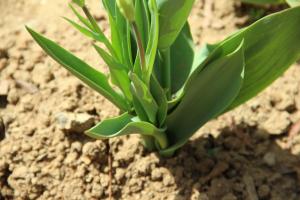Introduction
Hardy water lilies are beautiful aquatic plants that add an enchanting touch to any water feature. Whether you have a pond, a lake, or a small water garden, hardy water lilies are one of the most popular choices for their attractive blooms and easy maintenance. When planting hardy water lilies, one of the most important factors to consider is the depth of planting. In this article, we will explore how deep to plant hardy water lilies and why it matters.
Why planting depth matters
The depth at which you plant hardy water lilies is crucial for their growth and success. Planting them too shallow can leave the roots exposed and make them vulnerable to damage, while planting them too deep can restrict their access to light and nutrients, ultimately stunting their growth. Additionally, improper planting depth can also affect the temperature of the water around the plant and its ability to bloom.
How deep to plant hardy water lilies
The ideal planting depth for hardy water lilies is between 12 and 24 inches. At this depth, the plant's crown and roots are beneath the water's surface, while the leaves and blooms are above it. This placement allows for ample access to sunlight, nutrients, and oxygen while also keeping the plant's roots protected from damage.
Planting tips
When planting hardy water lilies, there are a few things to keep in mind to ensure their success. Firstly, make sure that the planting container is large enough to accommodate the root system and that it has holes for drainage. Fill the container with a mixture of heavy soil and a layer of pea gravel on top to help keep the soil in place. Secondly, gently place the plant into the container at the desired planting depth and cover the roots with the soil mixture. Finally, top off the container with a layer of pea gravel to weigh it down and prevent soil from floating away.
Maintaining hardy water lilies
Proper maintenance is the key to keeping your hardy water lilies healthy and blooming. Apart from planting them at the correct depth, make sure to fertilize them regularly with a specialized aquatic plant fertilizer. Trim off any dead or damaged leaves and flowers to encourage new growth and prevent the spread of disease. Keep an eye out for any signs of pests or diseases and treat them promptly to keep your plants thriving.
Conclusion
Overall, planting hardy water lilies requires careful consideration of their ideal planting depth. With the proper planting depth and proper maintenance, hardy water lilies can quickly become the centerpiece of any aquatic feature. Follow these tips, and you'll be sure to have a beautiful and healthy water garden that enhances your outdoor space for years to come.

 how many times do yo...
how many times do yo... how many planted tre...
how many planted tre... how many pine trees ...
how many pine trees ... how many pecan trees...
how many pecan trees... how many plants comp...
how many plants comp... how many plants can ...
how many plants can ... how many plants and ...
how many plants and ... how many pepper plan...
how many pepper plan...































